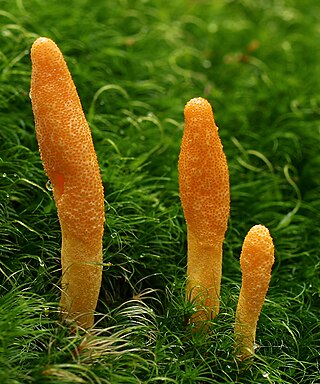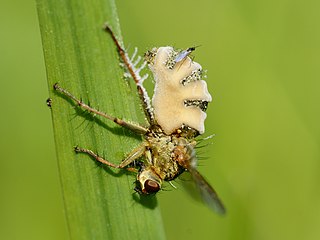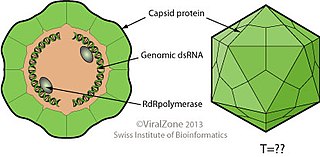Related Research Articles

Mycology is the branch of biology concerned with the study of fungi, including their taxonomy, genetics, biochemical properties, and use by humans. Fungi can be a source of tinder, food, traditional medicine, as well as entheogens, poison, and infection.

Eisaku Satō was a Japanese politician who served as prime minister of Japan from 1964 to 1972. He is the third longest-serving prime minister, and ranks second in longest uninterrupted service as prime minister.

The genus Amanita contains about 600 species of agarics, including some of the most toxic known mushrooms found worldwide, as well as some well-regarded edible species. The genus is responsible for approximately 95% of fatalities resulting from mushroom poisoning, with the death cap accounting for about 50% on its own. The most potent toxin present in these mushrooms is α-Amanitin.

Takuma Sato, nicknamed "Taku", is a Japanese professional racing driver. He competes part-time in the IndyCar Series, driving the No. 11 Honda for Chip Ganassi Racing. Sato is a two-time winner of the Indianapolis 500, having won the event in 2017 and 2020. He was the first Asian driver to win the Indianapolis 500, and the twentieth driver to win the race more than once. Before winning the Indianapolis 500, Sato became the first Japanese-born driver to win an IndyCar Series race when he won the 2013 Grand Prix of Long Beach.

Cordyceps is a genus of ascomycete fungi that includes about 600 worldwide species. Diverse variants of cordyceps have had more than 1,500 years of use in Chinese medicine. Most Cordyceps species are endoparasitoids, parasitic mainly on insects and other arthropods ; a few are parasitic on other fungi.
Edred John Henry Corner FRS was an English mycologist and botanist who occupied the posts of assistant director at the Singapore Botanic Gardens (1929–1946) and Professor of Tropical Botany at the University of Cambridge (1965–1973). Corner was a Fellow of Sidney Sussex College from 1959.

The Entomophthorales are an order of fungi that were previously classified in the class Zygomycetes. A new subdivision, Entomophthoromycotina, in 2007, was circumscribed for them.

Naohidemyces vaccinii is a plant pathogen that affects members of the Vaccinium and Tsuga genera, causing leaf rust on lingonberries, blueberries, and cranberries, and early needle cast on hemlocks. Naohidemyces vaccinii is found on the Vaccinium genus in Canada, the United States, the United Kingdom, Europe, Russia, China, Korea, and Japan, and on hemlock in AK, ID, WA in the United States, BC in Canada, and Japan.

Tsuguo Hongo was a Japanese mycologist who specialized in the biogeography and taxonomy of Agaricales. Hongo entered the Department of Biology at what is now Hiroshima University in 1943, where he studied botany until graduating in 1946 with a B.Sc. Hongo received his Ph.D. degree, entitled "Agaricales of Japan", from Kyoto University in 1961 while working under Dr. Shiro Kitamura.

Chorioactis is a genus of fungi that contains the single species Chorioactis geaster. The mushroom is commonly known as the devil's cigar or the Texas star in the United States, while in Japan it is called kirinomitake (キリノミタケ). This extremely rare mushroom is notable for its unusual appearance and disjunct distribution; it is found only in select locales in Texas and Japan. The fruit body, which grows on the stumps or dead roots of cedar elms or dead oaks, somewhat resembles a dark brown or black cigar before it splits open radially into a starlike arrangement of four to seven leathery rays. The interior surface of the fruit body bears the spore-bearing tissue known as the hymenium, and is colored white to brown, depending on its age. The fruit body opening can be accompanied by a distinct hissing sound and the release of a smoky cloud of spores.

Pilophorus is a genus of lichenized fungi in the family Cladoniaceae. They are commonly known as matchstick lichens. The genus has a widespread distribution, especially in temperate regions, and contains 11 species.

Polyozellus is a fungal genus in the family Thelephoraceae, a grouping of mushrooms known collectively as the leathery earthfans. Previously considered a monotypic genus, it now contains the Polyozellus multiplex species complex. The genus name is derived from the Greek poly meaning many, and oz, meaning branch. It is commonly known as the blue chanterelle, the clustered blue chanterelle, or, in Alaska, the black chanterelle. The distinctive fruit body of this species comprises blue- to purple-colored clusters of vase- or spoon-shaped caps with veiny wrinkles on the undersurface that run down the length of the stem.

The Chaconiaceae are a family of rust fungi in the order Pucciniales. The family contained 8 genera and 75 species in 2008. By 2020, there were 8 genera and 84 species.

Amanita ceciliae, commonly called snakeskin grisette, strangulated amanita, and the Cecilia's ringless amanita, is a basidiomycete fungus in the genus Amanita. First described in 1854 by Miles Joseph Berkeley and Christopher Edmund Broome, it was given its current name by Cornelis Bas in 1984. It is characterized by bearing a large fruit body with a brown cap 5–12 cm (2.0–4.7 in) across. The cap has charcoal-grey patches, which are easily removable. The stipe is 7–18 cm (2.8–7.1 in) long, white in colour, and there is no ring on it. It is slightly tapered to the top, and has irregular cottony bands girdling the base. The universal veil is grey. Spores are white, spherical in shape, non-amyloid, and measure 10.2–11.7 micrometres. The mushrooms are considered edible, but field guides typically advise caution in selecting them for consumption, due to risks of confusion with similar toxic species. A. ceciliae is found in woods throughout Europe and North America, where it fruits during summer and autumn.

Pleurocybella porrigens is a species of fungus in the family Phyllotopsidaceae. The species is widespread in temperate forests of the Northern Hemisphere. P. porrigens, known as the angel wing, is a white-rot wood-decay fungus on conifer wood, particularly hemlock. The flesh is thin and fragile compared to the oyster mushrooms.
Decliniidae is a family of beetles belonging to Scirtoidea. It contains the single genus Declinia with two species, D. relicta and D. versicolor, found in the Russian Far East and Japan, respectively. Little is known of their ecology, and their larvae are unknown. Specimens of D. relicta were found with pollen grains in their gut.
Pseudotulostoma is a genus of fungi in the family Elaphomycetaceae. The genus contains two species; one found in Guyana and one in Japan.

Megabirnaviridae is a family of double-stranded RNA viruses with one genus Megabirnavirus which infects fungi. The group name derives from member's bipartite dsRNA genome and mega that is greater genome size than families Birnaviridae and Picobirnaviridae. There is only one species in this family: Rosellinia necatrix megabirnavirus 1. Diseases associated with this family include: reduced host virulence.

Naohidemyces is a genus of fungi belonging to the family Pucciniastraceae.
Sato's beaked whale is a little-known species of four-toothed whale, a type of beaked whale.
References
- ↑ Kirk PM, Cannon PF, Minter DW, Stalpers JA (2008). Dictionary of the Fungi (10th ed.). Wallingford, UK: CABI. p. 125. ISBN 978-0-85199-826-8.
- ↑ Kakishima M, Sato T, Sato S (1984). "Ceraceopsora, a new genus of Uredinales from Japan". Mycologia. 76 (6): 969–974. doi:10.2307/3793014. JSTOR 3793014.